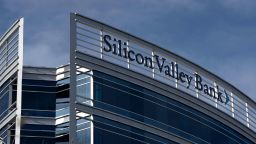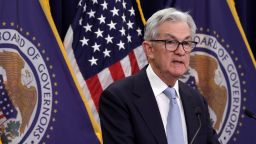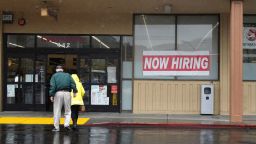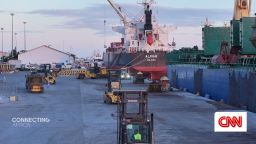The Federal Reserve on Wednesday announced its 10th-straight interest rate hike, raising its benchmark rate by another quarter of a point and hinting at a pause as soon as next month.
Here are five takeaways from the central bank’s latest action and Fed Chair Jerome Powell’s news conference:
Banking conditions have improved, but there could be ripple effects from the turmoil
When the Fed’s policymaking committee last came together in March, that meeting landed two weeks after the biggest bank failures seen since 2008.
This time around, the central bank’s meeting occurred two days after First Republic Bank failed.
Powell led off his comments by addressing the state of the US banking industry.
“Conditions in the sector have broadly improved since early March, and the US banking system is sound and resilient,” he said. “We will continue to monitor conditions in the sector. We’re committed to learning the right lessons from this episode.”
Late last week, the Fed released its postmortem on the collapse of Silicon Valley Bank, which criticized mismanagement by bank executives as well as short-sightedness by regulators.
As a result of the banking system turmoil, the Fed expects that credit will continue to tighten for households and businesses and, as a result, slow the economy.
“These tighter credit conditions are likely to weigh on economic activity, hiring and inflation,” Powell said. “The extent of these effects remains uncertain.”
A key federal report on lending conditions, the Senior Loan Officer Opinion Survey, will come out on May 8, Powell said.
The latest survey will be largely consistent with other lending indicators as well as the Fed’s expectations, he said.
“You will have seen the Beige Book and listened to the various earnings calls that indicate mid-sized banks, some of them have been tightening their lending standards,” he said. “Data will show that the lending has continued to grow but the pace has been slowing since the second half of last year.”
A pause may be in the Fed’s future
Perhaps one of the most telling aspects of the Fed’s post-meeting statement was something that was missing.
The Fed omitted the following phrase from its March statement: “The committee anticipates that some additional policy firming may be appropriate in order to attain a stance of monetary policy that is sufficiently restrictive to return inflation to 2% over time.”
Instead, Wednesday’s statement included the phrasing of “in determining the extent to which additional policy firming may be appropriate.”
“That’s a meaningful change that we were no longer saying that we ‘anticipate,’” Powell said. “So we’ll be driven by incoming data, meeting by meeting, and we’ll approach that question at the June meeting.”
A complicating element in that evaluation will be the amount of credit tightening and to what extent that acts as another interest rate hike, he said.
“We have a broad understanding of monetary policy. Credit tightening is a different thing,” he said. “There is a lot of literature on that, but translating it into rate hikes is uncertain.”
The early market predictions for the June meeting show a nearly 92% probability that the Fed will hold steady at the 5% to 5.25% range, according to CME FedWatch.
There’s more work to be done on inflation
The Fed’s next step will be influenced by the economic data that will be released in the next 42 days, including two months’ worth of jobs data and a slew of key reports on inflation, consumer spending, sentiment and economic activity.
The Fed’s favorite inflation gauge, the Personal Consumption Expenditures price index, showed that prices rose 4.2% in the 12 months ended in March. Excluding the volatile food and energy components, prices rose 4.6% annually.
That’s still “well above” the Fed’s 2% target, Powell said.
Inflation has moderated since hitting a 40-year high last summer. However, it’s been a bumpy ride down.
“We have seen inflation come down, move back up two or three times since March 2021,” Powell said. “We’ve seen inflation have a few months of coming down and moving right back up. I think you’re going to want to see a few months of data that will persuade you that you’ve got this right.”
Powell noted that a key supercore gauge of non-housing services “hasn’t moved much.”
“Demand will have to weaken a little bit, and labor market conditions will have to soften a bit more to begin to see progress there,” he said.
He noted that ideal wage growth, which is running at about 5%, should be around 3% to be consistent with inflation over time.
Powell also was quick to clarify the role wages play in inflation.
“I do not think that wages are a principal driver of inflation,” he said. “They tend to move together, and it is very hard to say what’s causing what. I never said that wages are the principal driver, because I don’t think that’s really right.”
He believes a soft landing is possible
While the Fed’s own economists say the banking turmoil could send the United States into a recession later this year, the labor market’s continued resiliency lends some hope that a soft landing is still achievable, Powell said.
“We’ve raised rates by 5 percentage points in 14 months, and the unemployment rate is 3.5%, pretty much where it was or even lower than it was when we started,” Powell said.
Job openings remain high — the March Job Openings and Labor Turnover Survey showed there were 1.6 available jobs for every job seeker — and there are indications of gradual cooling in the labor market, he said.
It wasn’t supposed to be possible for job openings to decline as much as they’ve declined without unemployment going up, he said.
“It’s possible that we can continue to have a cooling in the labor market without having the big increases in unemployment that have gone with many prior episodes,” he said. “And that would be against history. I fully appreciate that would be against the pattern.”
While Powell said he believes the chances of a soft landing are greater than not, if it does end up being the latter, he’d expect a recession to be “mild.”
The Fed can’t save the United States if it defaults on its debts
Powell on Thursday reiterated previous statements urging for the debt ceiling to be raised.
Not doing so would be “unprecedented,” he said, adding that the consequences to the US economy could be highly uncertain and “quite averse.”
He also cautioned that the Fed’s ability to save the economy could be limited.
“No one should assume that the Fed can protect the economy and financial system and our reputation from the damage that such an event might inflict,” he said.
Treasury Secretary Janet Yellen said this week that the United States could default on its debt as soon as June 1 if Congress doesn’t take action to raise the debt limit.
President Joe Biden is expected to meet with congressional leaders on the issue next week.












